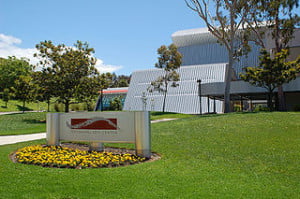The fourth in this series.
For California cities, I can think of no better example than San Luis Obispo for inclusion in the “Great Western Cities ‘On-the-Air’ tour” series. Reason being, San Luis Obispo – “Spanish for St. Louis, the Bishop [of Toulouse]” – is one of this nation’s most environmentally conscious towns – in my opinion, of course. As far as I’m concerned, in this sense SLO (short for San Luis Obispo) has few equals – in California or anywhere else in the U.S. for that matter.

Situated roughly midway between the sprawling Los Angeles and the no-less-so San Francisco Bay Area Metroplexes, my first introduction to the California Central Coast region and San Luis Obispo specifically was in September 1973. What I was doing there then was to attend college at California Polytechnic State University (Cal Poly). Arriving by plane and upon alighting, for a young man all of 20 years old, it was one of those “love-at-first-sight” experiences.
In painting a more accurate picture, today SLO is an idyllic town, and just so happens to be surrounded by foothills on all sides with a population as of 2010 of 45,119 people, that is, according to Wikipedia.
Anyone who has a love of the outdoors would be right at home in SLO. Quite comfortable in terms of temperatures and humidity levels and located just a short distance from Pacific Ocean-abutted communities such as Cayucos and Morro Bay (Morro Strand, actually) to the north and Avila Beach and Pismo Beach to the south, to name but four, San Luis Obispo is a running, biking and hiking paradise.
There are shopping centers, sure, but there is also a flourishing, inviting, welcoming downtown; what I would call easy-going or laid-back that just happens to be teeming with pedestrian activity much of the time. It doesn’t hurt that running through it all is a meandering water course known as San Luis Creek – an attraction in its own right. Besides Mission San Luis Obispo de Tolosa (one of 21 California Missions scattered along both the coast and Highway 101 – a highway variously named as “Ventura Highway” and “El Camino Real” or “The Kings Highway”), there is another downtown people magnet of note: the famed “gum wall.”
Now, not only has the buzzword notion of sustainability become a hit with town residents with practices like bike-sharing, car-sharing, and businesses sans drive-through windows at local eateries, pharmacies and what-not, surcharges on grocery-store-provided plastic and paper shopping bags, and sustainable development approaches with regard to in-town residential and commercial building and construction, but the university has caught the “green fever” also. Cal Poly is one of the more green campuses in my opinion with its methane digester system for an on-site dairy and its adoption of and participation in community supported agriculture (CSA) and algae-to-biofuel conversion programs, these, of course, in the company of other related programs and practices.
Meanwhile, back on May 28, 2014 in “Helping improve air, land, water the SLO Chamber way,” I wrote: “The building the Chamber occupies is LEED Certified,” referring, of course, to San Luis Obispo’s quite aesthetically-pleasing-looking Chamber of Commerce building.
Desiring to gain a better understanding of just what LEED Certification is about, I contacted U.S. Green Building Council Media Specialist Jacob Kriss who, in an email, wrote: “LEED (Leadership in Energy and Environmental Design) is the world’s foremost program guiding the design, construction, operations and maintenance of healthy, high-performing green buildings. To date, there are more than 22,000 LEED-certified commercial and institutional projects, and there are nearly 58,000 housing units certified under the LEED for Homes rating system. Every day, 1.7 million square feet of real estate is LEED certified, and there are LEED projects in 153 countries and territories worldwide. LEED buildings provide healthier indoor environments for students, workers, homeowners and community members; save money for building owners through reduced energy and water bills; and mitigate greenhouse gas emissions that contribute to climate change.”1
Oh, and as for air quality, while not for San Luis Obispo per se, the American Lung Association did, however, provide air quality data for all of San Luis Obispo County. In regard to “High Ozone Days,” the county was given a failing grade, F, and in which it recorded 33 days where air was “Unhealthy for Sensitive Groups.” With respect to the “Particle Pollution – 24 Hour” category, the outcome was better; the county received a grade of C whereby only three exceedances were recorded. And, for “Particle Pollution – Annual,” the county earned a passing grade. For more on this, go here.
All in all, quite admirable if I do say so myself!
Notes
- Jacob Kriss, Media Specialist, U.S. Green Building Council, personal communication, Jul. 8, 2014.
Image above: Gregg Erickson
– Alan Kandel